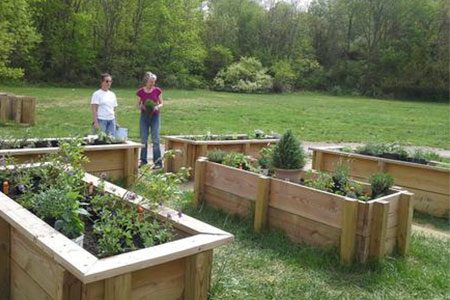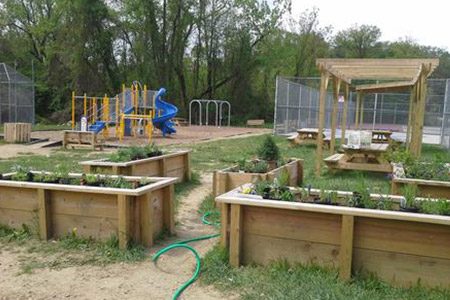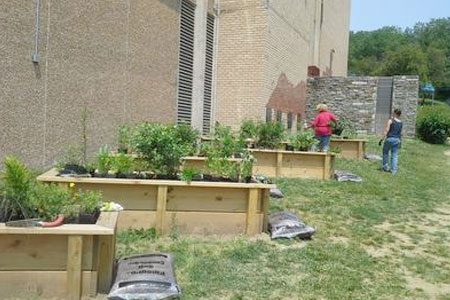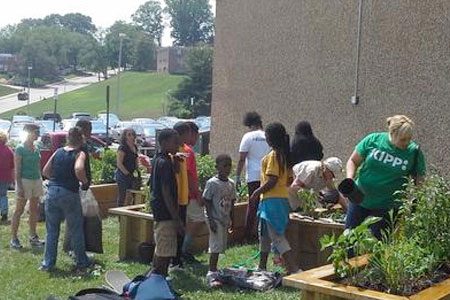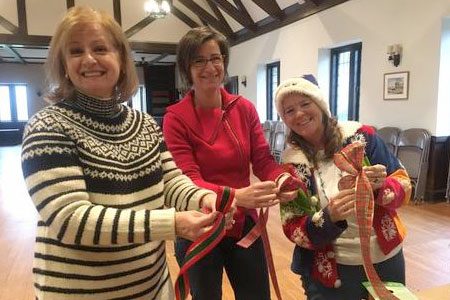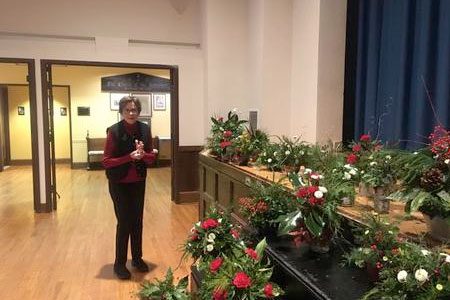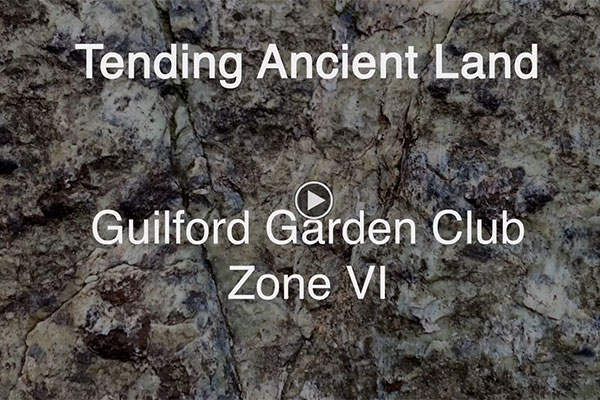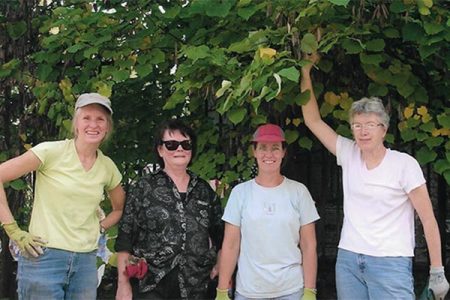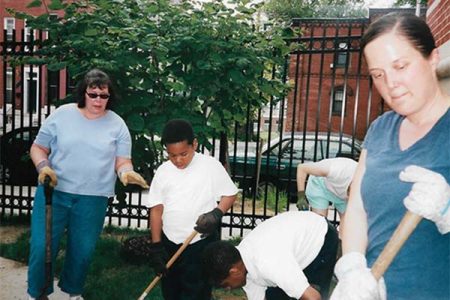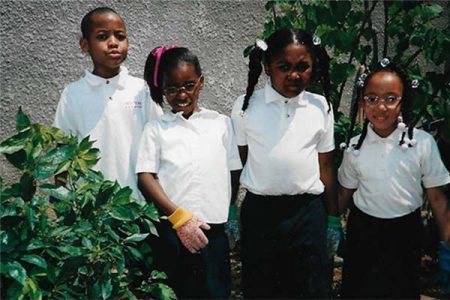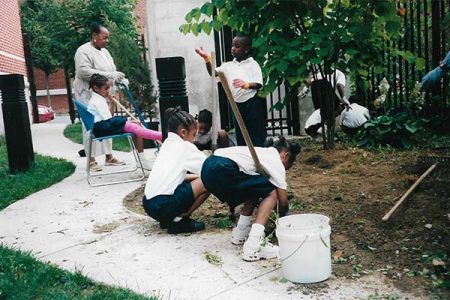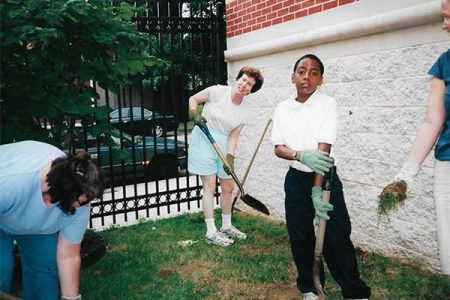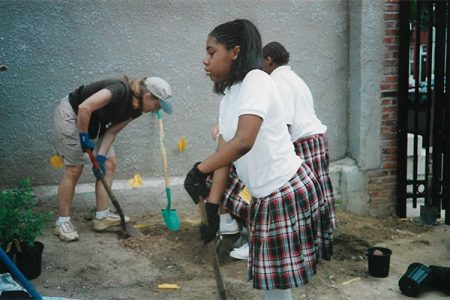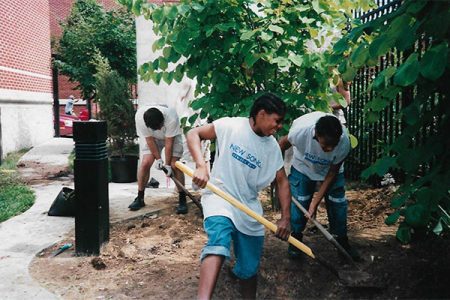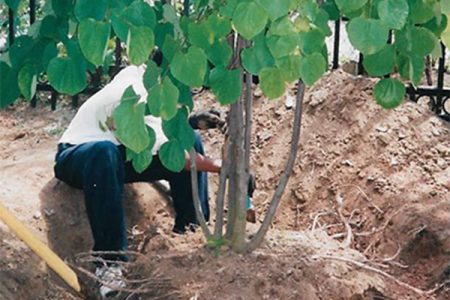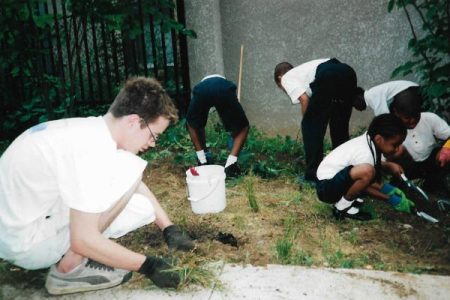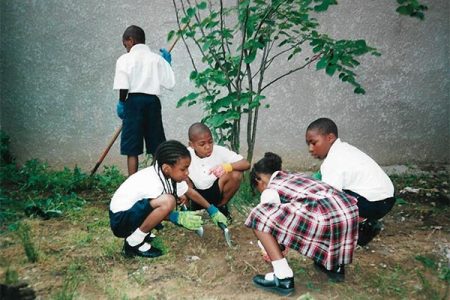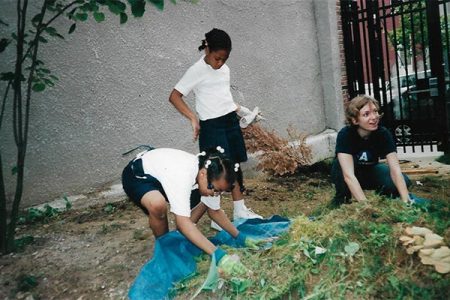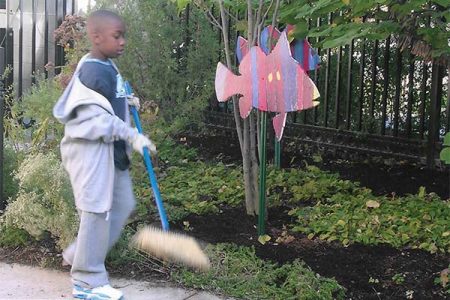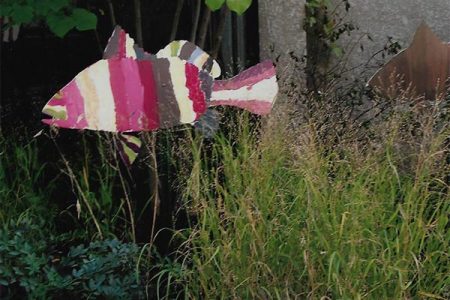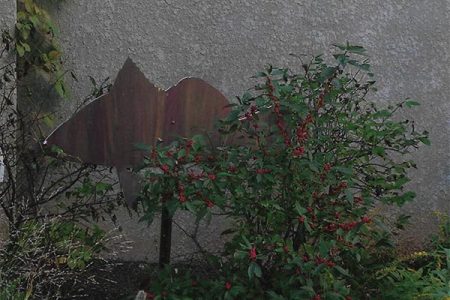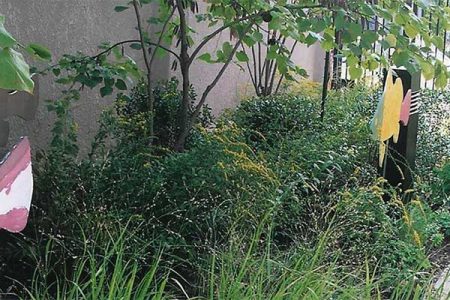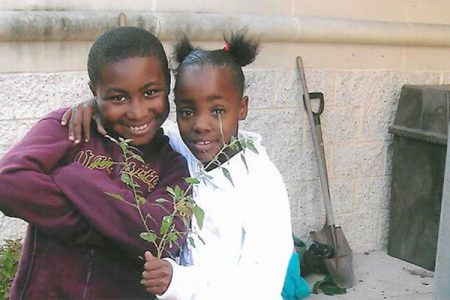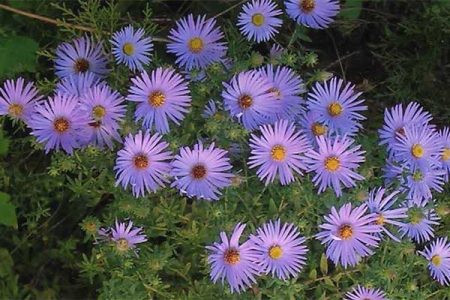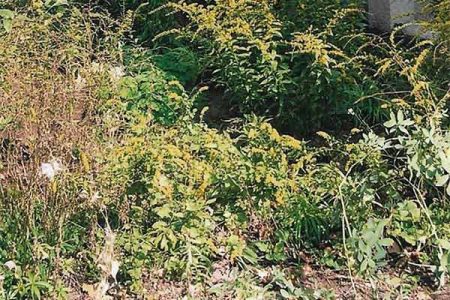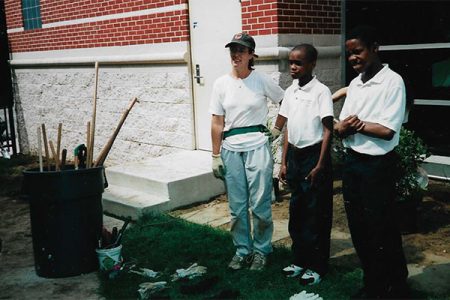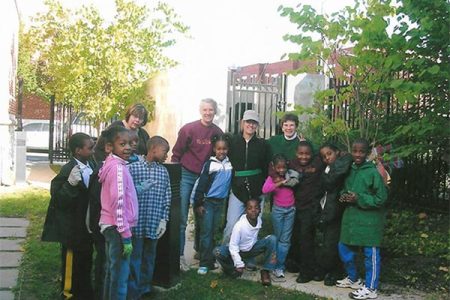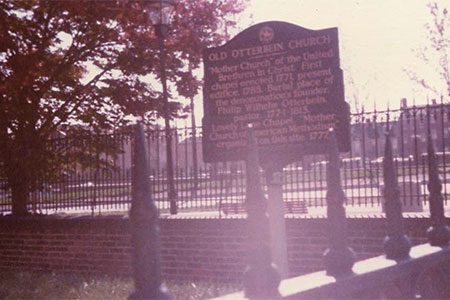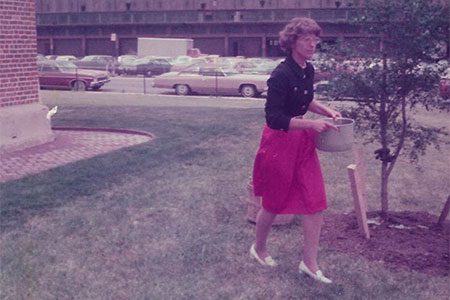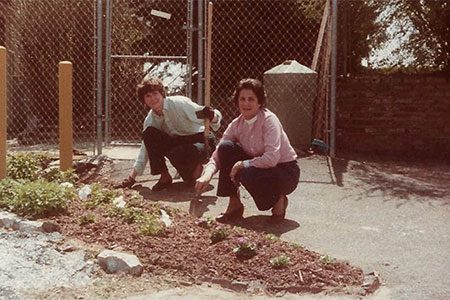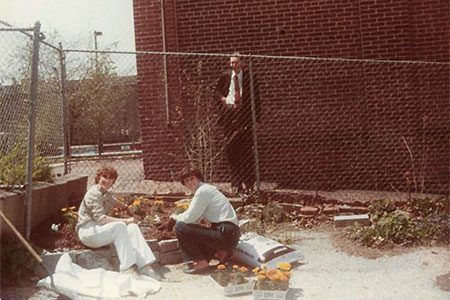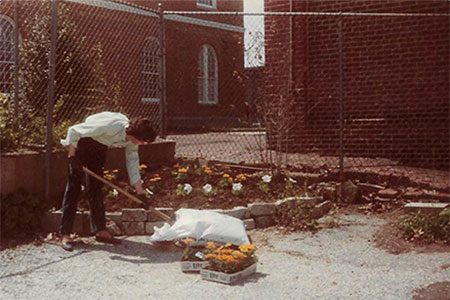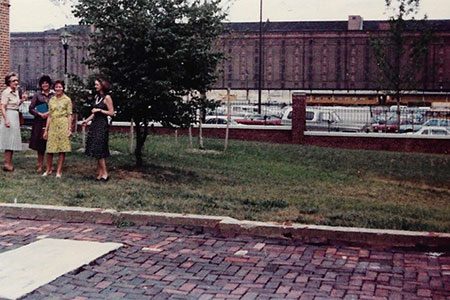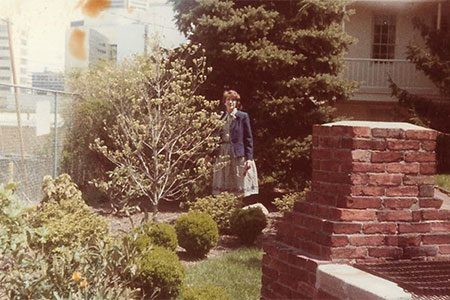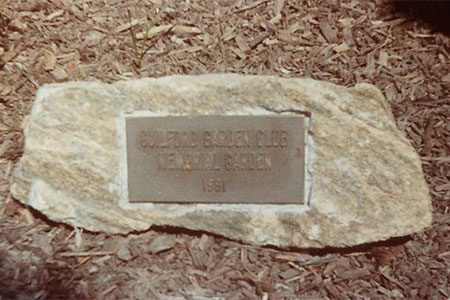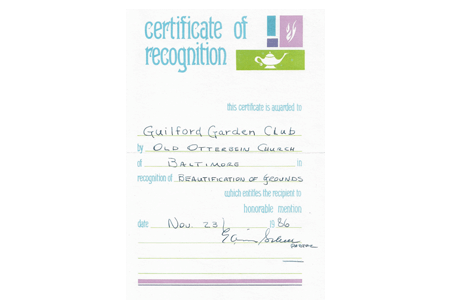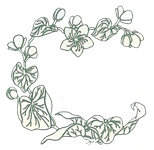
Education

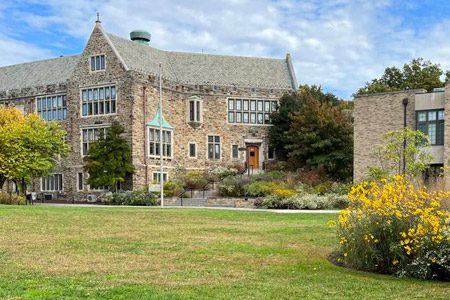
Native Plant Teaching Gardens: A Collaboration with the Guilford Garden Club
In partnership since 2005, Friends School of Baltimore and the Guilford Garden Club (GGC) have created a series of Native Plant Teaching Gardens throughout the campus. Conservation and education are at the heart of the project. The gardens employ Chesapeake Bay Watershed native plants that thrive with minimal care, attract pollinators and other wildlife, and absorb surface water on the school’s sloping campus.
Friends School, founded in 1784, is Baltimore’s oldest school. The campus is tucked between two Olmsted Brothers designed neighborhoods – Roland Park and Homeland. Managing storm water runoff has been a constant challenge on the school’s bowl shaped site that acts as a funnel for rain and snowmelt into the Stony Run, a creek on its western border channeling water that ultimately flows into the Chesapeake Bay. Over the past 11 years, GGC has worked with students, faculty and the extended community, providing garden plans and planting supervision. The groups have labored side-by-side, planting over 10,000 trees, shrubs, perennials, ferns and grasses in gardens designed to capture and control the flow of water.
In 2009, Stony Run Meeting joined the gardening efforts on campus. GGC members worked with the Upper School Sustainability Club and Stony Run Meeting members to design and build the Friends Community Garden. In this vegetable garden, organic gardening practices yield harvests shared with the CARES food pantry. In 2015 and 2016, rain gardens and conservation landscaping was installed on Meeting property.
As the gardens grow on campus, faculty members increasingly find ways to incorporate them into the curriculum. Art, science, and language arts classes as well as many clubs enjoy using resources right outside their door. Families have inquired about and are using native plants in their home gardens and planting vegetable patches; many have purchased plants at Scarlet and Gray Day (Homecoming) Native Plant Sales. Faculty and parents from neighboring schools and members of nearby churches have toured the campus, using it as a model as they make plans for their own native plant and vegetable gardens.
More work lies ahead. New garden designs and installations, signage, and the enormous task of clearing invasive plants to restore woodlands and the banks of Stony Run will require continued collaboration and outreach to neighbors. Together, GGC and Friends School aspire to create a “conservation campus” for water, energy, and native plants and wildlife of the Chesapeake Bay Watershed as well as generations of ecological gardeners.

Timeline

2005
Fall: Opening of New Middle School Building and GGC approval of project
2006
Winter: Original Meetings of School Administration and GGC
Earth Day 1st Planting: Middle School, Preprimary, Math Science Building
2007
Earth Day Cutting Back and Invasive Plant Removal
2nd Planting: Middle School, Preprimary, Math Science Building
2008
Earth Day Cutting Back and Invasive Plant Removal
3rd Planting: Swale Garden and Preprimary
Fall Native Plant Sale
4th Planting: Staircase Garden Phase I–boulders, trees, shrubs, grasses
2009
Earth Day Cutting Back and Invasive Plant Removal
5th Planting: Staircase Garden Phase II—perennials, grasses, and ferns
Lower School beds Phase I—trees and shrubs
Vegetable Garden Planning and Construction with Stony Run Meeting
Fall Native Plant Sale
2010
Earth Day William Penn Oak Planting, Cutting Back, and Invasive Plant Removal
6th Planting: Lower School
Phase II: Perennials, grasses and ferns
Fall Native Plant Sale
2011
Earth Day Cutting Back and Invasive Plant Removal
7th Planting: Cathedral Slope and Sourwood Bed
Fall Native Plant Flower Show with Guilford Garden Club “Going Native”
2012
Earth Day Cutting Back and Invasive Plant Removal
8th Planting: Forbush Memorial Garden
Picnic Glade Phase I–trees, shrubs and grasses
Fall Native Plant Sale
2013
Earth Day Cutting Back
9th Planting: Picnic Glade Phase II and Forbush Memorial Garden additions
Fall Native Plant Sale
Little Friends Phase I—trees, shrubs, perennials
2014
Earth Day Cutting Back
Little Friends Swale Garden
2015
Earth Day Cutting Back
Little Friends Swale—Phase 2 Planting and Hometown Habitat Filming
Fallen Tree Garden
2016
Earth Day Planting Middle School, Staircase, and Picnic Glade
Stony Run Meeting Rain and Conservation Landscaping Gardens

Style Magazine

Kathy Hudson interviewed Kay McConnell for an article in Style magazine about the Native Gardens at Friends School.

Funding

Friends School, Friends School Native Plant Garden Fund, Middle School Garden Club, and Sustainability Club
Chesapeake Bay Trust
Jones Falls Watershed
Stony Run Meeting
Friends Council on Education
Maryland Agricultural foundation
Food and Faith Program/Roswell grant Johns Hopkins School of Public Health

Nurseries

Although some nurseries listed below are wholesale only, many have websites with valuable information about native plants and helpful plant lists.
Nurseries with a * are open to retail customers; please check with each nursery for retail hours.
American Native Plants
Babikow Greenhouses
Cavanos Perennials*
Chesapeake Natives*
Heartwood Nursery*
Herring Run Nursery*
Kingsdene Nursery*
Manorview Farms
North Creek Nursery
Natural Landscapes Nursery
Perennial Farm*

Resources

Brown, M. and R. Brown. 1984. Herbaceous Plants of Maryland. Baltimore, MD: Port City Press, Inc.
Brown, M. and R. Brown. 1972. Woody Plants of Maryland. Baltimore, MD: Port City Press, Inc.
Cullina, W. 2000. The New England Wild Flower Society Guide to Growing and Propagating Wildflowers of the United States and Canada. Boston, MA and New York, NY: Houghton Mifflin Company.
Cullina, W., New England Wild Flower Society. 2002. Native Trees, Shrubs, & Vines. Boston, MA and New York, NY: Houghton Mifflin Company.
Cullina, W., New England Wild Flower Society. 2008. Native Ferns, Moss, & Grasses. Boston, MA and New York, NY. Houghton Mifflin Company
Darke, R. 2002. The American Woodland Garden. Portland, Oregon: Timber Press
Darke, R. and D. Tallamy. 2014. The Living Landscape. Portland Oregon. Timber Press
Leopold, D. 2005. Native Plants of the Northeast: A Guide for Gardening & Conservation. Portland, Oregon: Timber Press.
Messervy, J., The Inward Garden. 1995. Boston, Ma. Little , Brown, and Co.
Rainer, T. and Claudia West. 2015. Planting in a Post-Wild World. Portland, Oregon. Timber Press
Roberts, Edith A. and Elsa Rehmann.1996. American Plants for American Gardens.
University of Georgia Press, Athens, Georgia. Copyright 1929 Macmillan Company
Robinson, W. with Rick Darke. 2009. The Wild Garden. Portland, Oregon. Timber Press.
Sawyers, Claire. 2007. The Authentic Garden: Five Principles for Cultivating a Sense of Place. Portland, Oregon: Timber Press
Slatterly, B., K. Reshetiloff, and S. Zwicker. 2003. Native Plants for Wildlife Habitat and Conservation Landscaping: Chesapeake Bay Watershed. U.S. Fish and Wildlife Service, Chesapeake Bay Field Office. Annapolis, MD. 82.pp.
Sternberg, G. with J. Wilson. 2004. Native Trees for North American Landscapes Portland, Oregon: Timber Press.
Swearingen, J., K. Reshetiloff, B. Slatterly and S. Zwicker. 2002. Plant Invaders of the Mid-Atlantic Natural Areas. National Park Services and U. S. Fish and Wildlife Service. Washington, D.C. 82 pp.
Tallamy, Doug. 2007. Bringing Nature Home: How Native Plants Sustain Wildlife in Our Gardens. Portland, Oregon: Timber Press
Weaner, Larry and Thomas Christopher. 2016. Garden Revolution: How our landscapes can be a source of environmental change. Portland, Oregon.

